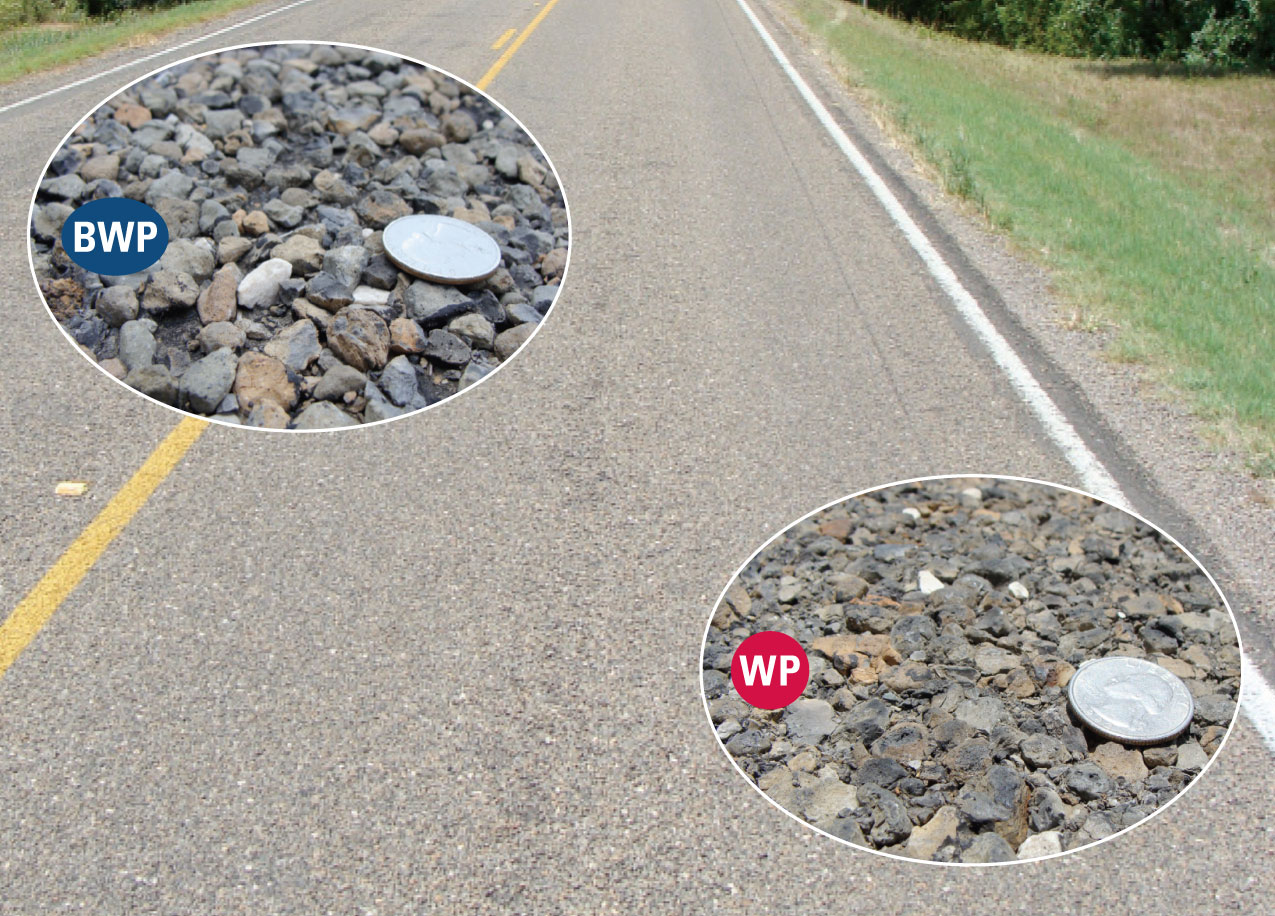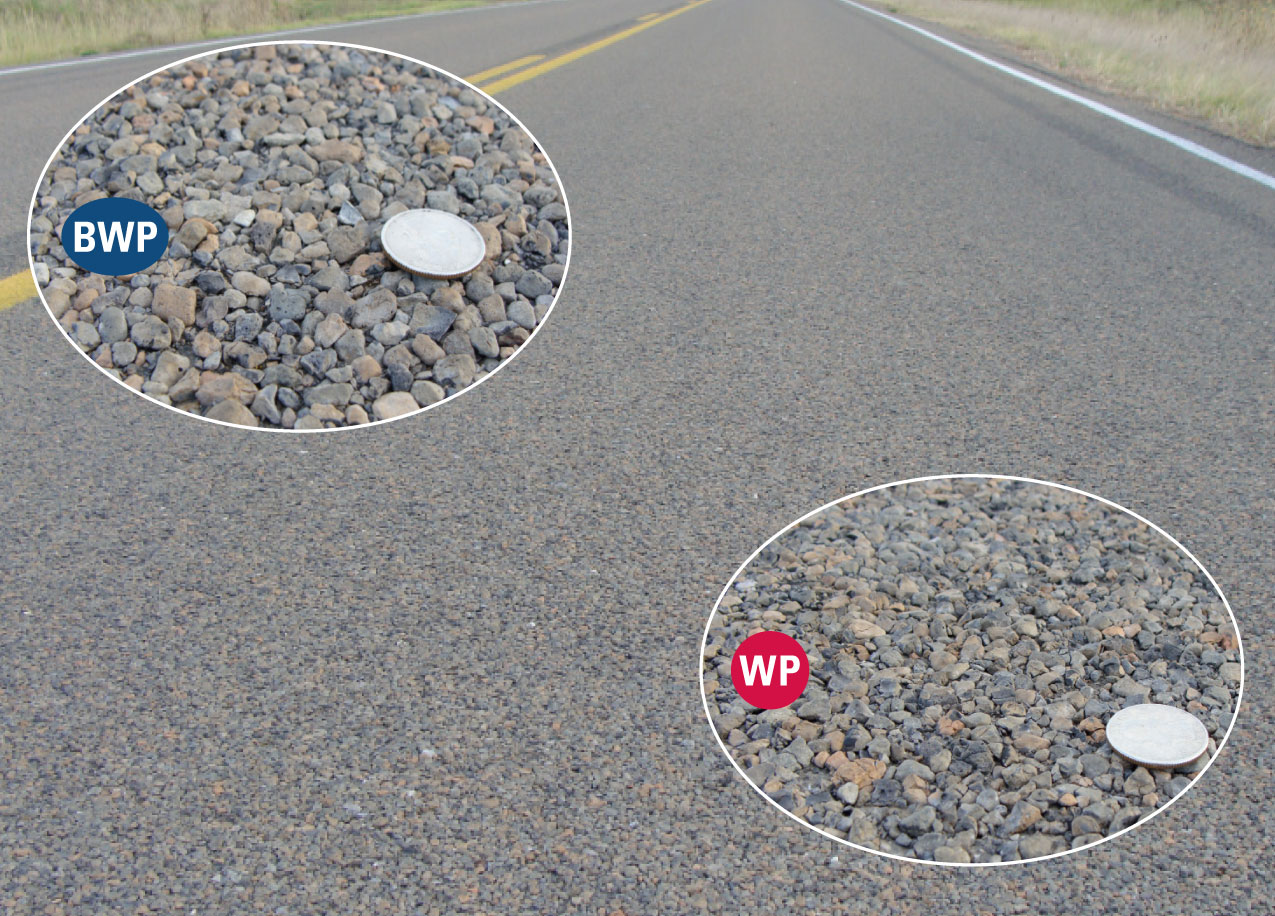Considering Why and When to Require TVAR�
Why Use TVAR?
The purpose of using TVAR is to improve roadway safety and increase seal longevity. If prior practice has been to attempt to average the need for asphalt across the pavement being sealed, future use of TVAR will both diminish the occurrence or reoccurrence of wheel path flushing and improve aggregate retention outside of the wheel paths. These improvements will increase skid resistance, providing a safer roadway for the travelling public.�TxDOT districts frequently using TVAR report that TVAR improves seal coat performance. In some cases it is possible to completely eliminate the return of wheel path flushing.�
Asphalt and Aggregate Considerations.
Asphalt type and grade are not factors when considering the use of TVAR. Districts using this seal coat method specify both hot asphalt cements and emulsions. TVAR has limited but successful use with asphalt rubber.�Aggregate type is not a factor. Districts have successfully used lightweight and hard rock aggregates, precoated and plain aggregates, and grades 3 and 4.
Existing Pavement Type Considerations.
TVAR seal coats may be placed on any pavement surface. However, their greatest value is obtained when placed over existing seal coats where flushing has significantly reduced texture in the wheel paths. It is recommended that districts without experience with TVAR begin with applications over existing seal coats with wheel path flushing.�Selecting Roadway Sections Appropriate for TVAR by Visual Appearance.
The degree to which texture differs across the roadway is a direct indicator of desirability to transversely vary the asphalt rate. Figures 4-3 through 4-9 show pavements where textures vary across the roadway to differing degrees. The first five pavements are desirable candidates for TVAR use, and the sixth and even the seventh may be possibilities if the contractor’s equipment is capable of small percentage TVARs.�The conditions of the roadway wheel paths in Figures 4-3 and 4-4 clearly indicate need for corrective action. While TVAR should be used when the next seal coat is placed on roadways similar to these two, other corrective treatments are usually required in addition to TVAR to obtain significant and long term wheel path texture improvements. �
The roadways in Figures 4-5, 4-6, and 4-7 have somewhat less wheel path flushing. These are ideal situations for improving future seal coat performance with TVAR.�
The lane in Figure 4-8 has a just-perceptible wheel path color difference. It is a candidate for TVAR only if the contractor can vary the asphalt rate by small percentages. �
The lane in Figure 4-9 has no readily visible texture difference in the wheel paths. This pavement surface is a one-year-old maintenance seal coat within the limits of a district seal coat program pavement. Pavements in this condition are definitely inappropriate for higher percentage TVAR and usually are not given an even smaller percentage TVAR treatment.�
For Figures 4-3 through 4-9, “WP” in the red circle represents a close up of the wheel path, and “BWP” in the blue circles represents a close-up of the road section between the wheel paths.�

Figure 4-3. Lane with severe flushing.�

Figure 4-4. Lane with moderate to severe flushing.�

Figure 4-5. Lane with moderate flushing.

Figure 4-6. Lane with mild to moderate flushing.

Figure 4-7. Lane with mild flushing.

Figure 4-8. Lane with slight wheel path color difference.

Figure 4-9. Lane with no wheel path color difference.
Current practitioners have identified several situations where they recommend avoiding TVAR use:�
- When a Grade 5 aggregate is being used�
- When shooting emulsions on full super-elevated curves, as it may increase asphalt migration prior to rock placement�
- On new construction because the degree of potential benefit is small compared to potential loss of performance due to smaller amounts of asphalt sealing the pavement where stresses are the greatest�
- On shoulders and other non-traffic locations�
- In continuous left-hand turn lanes where traffic patterns are random�
- In intersections where the side street also carries considerable traffic volume
- On flushed or bleeding hot mix pavements that may have stripping or an otherwise unstable pavement layer below.�